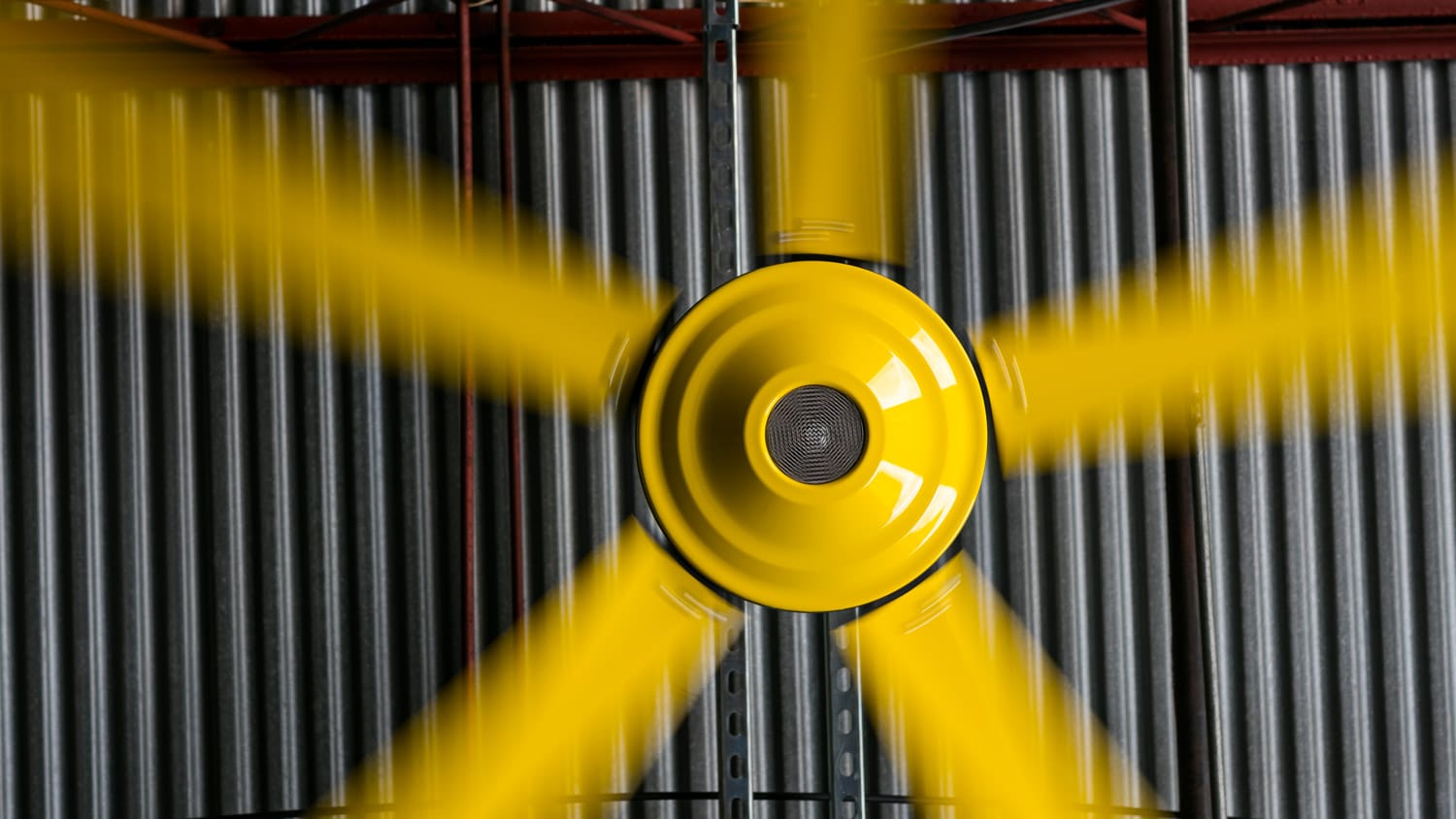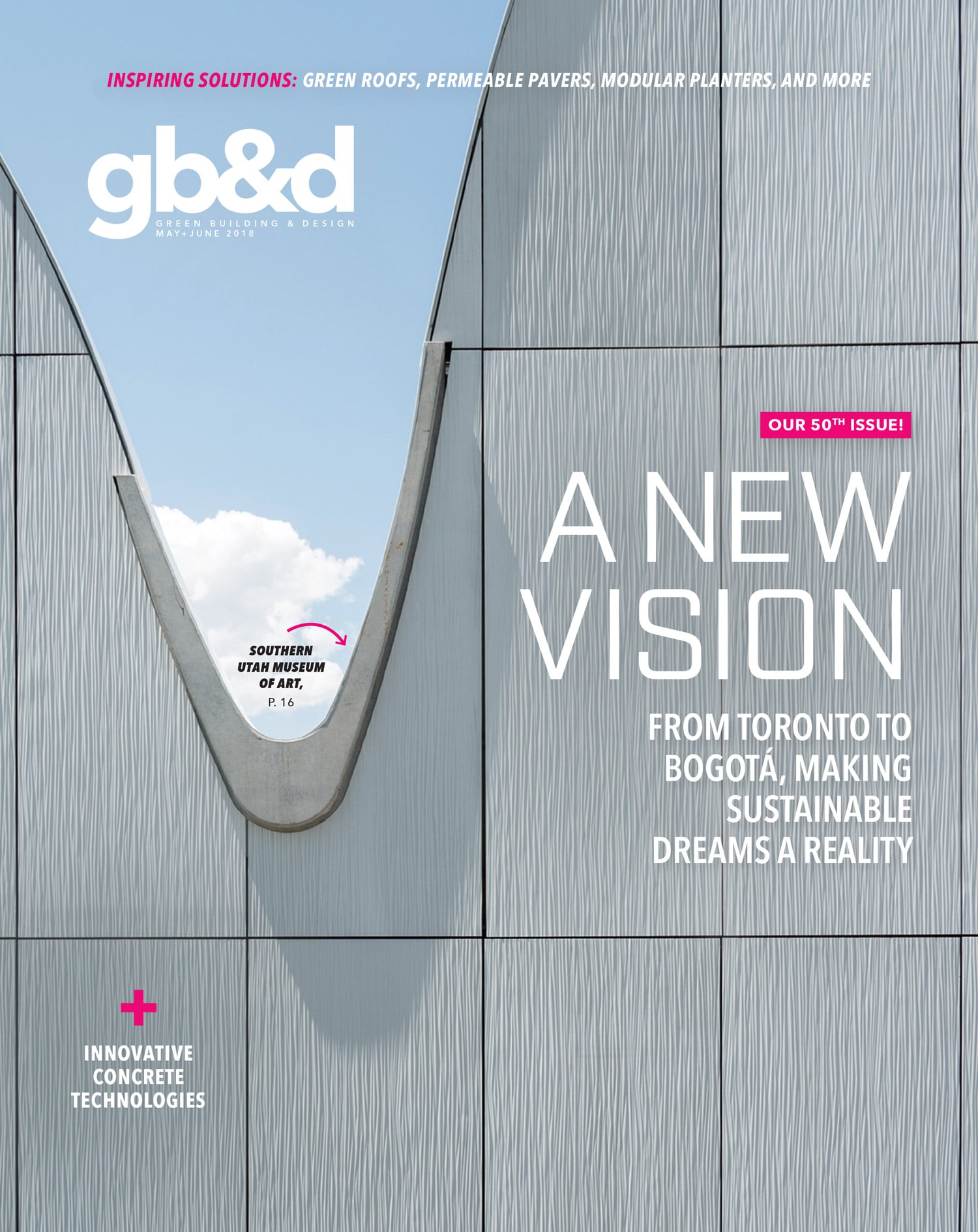An architect shares her thoughts on integrating Entrematic’s HVLS fans into an important project.

Entrematic’s commercial fans come in eight colors and cost less than competitors’ options.
[Photo: Courtesy of Entrematic]
When Sarah Marshall of Napa Design Partners set out to design the new 15,000-square-foot American Canyon Boys & Girls Club, she knew she wanted a look that was both vibrant and industrial, while also making sense in the indoor/outdoor space. Part of that, she says, meant installing nine HVLS (high-volume low-speed) fans. But even she admits, an expense like fans is often the first to be cut from projects. Fortunately, that didn’t happen on this community project. Instead, the team was able to keep the fans while eliminating the building control system—the fans will run manually. gb&d recently talked with Marshall about the team’s choices and how Entrematic helped them bring their vision to life.
Why consider HVLS fans in the first place?
“We have been using HVLS fans more and more, partly because we have been doing a lot more exposed framework … but also because we’re in the northern California area, so the majority of our year is pretty nice, weather-wise,” Marshall says. “We design a lot of our buildings with indoor/outdoor spaces, so we’re not designing mechanical systems in the same way anymore. We don’t have fully enclosed conditioned spaces. That allows us to use the fans to limit the amount of ductwork we’re exposing on our ceilings as well as for air movement when we’ve got big, open doors.”
Why use Entrematic and not a competitor?
Marshall and the team considered a competitor, but the process was long and the options were limited. Marshall ultimately turned to Entrematic for its simple, clean look and array of colors. She says it helped that the company offered more affordable options and was easy to work with, too.
FROM OUR MAY+JUNE 2018 ISSUE
The preferred publication of leading green professionals.

[Photo: Courtesy of Entrematic]
Is color really that important?
Marshall says color played a very important role in this project, and she’s excited to see the fans up and running when the club opens in May. “I think they will be a fun element in the room,” she says. Napa Design Partners designed the rooms to be color-coded—the art room is orange and the early childhood space is yellow, for example. “We had the opportunity at no extra cost to color coordinate these fans to the rooms.”
There’s often the impression that changing colors is costly, but that’s not the case with Entrematic, says Adam Kopperud, the company’s western U.S. territory manager. Entrematic offers eight colors for commercial fans for significantly less cost than competitors, so architects can achieve the look they want. “The comments we’ve gotten from architects shows they really like the look of the industrial-style fan—the way it kind of pops,” Kopperud says.
How else do these fans fit in aesthetically?
The Boys & Girls Club has high ceilings, exposed ductwork, and concrete floor—it’s a clean, simple, industrial space, so the HVLS fans fit in perfectly, Marshall says. How will the occupants benefit?
Marshall says having HVLS fans also encourages young people to consider how a space operates. “Especially for a Boys & Girls Club, to have a building that tells a little bit about how buildings work—having exposed ductwork and fans that circulate air and lights that are all on daylight sensors—to me those are things that are all lessons … All these kids are going to see all of that and they’re going to understand those things are important to buildings.”
How do the fans save energy?
For starters, these fans eliminate the need to turn on the air conditioning many days, Marshall says. And, of course, California and the West Coast tend to be ahead of the trends, especially environmentally. “We’re seeking out new technology that helps us meet the CALgreen (California Green Building Standards Code) requirements, so I think it’s both great and obviously a challenge for all of our designers. But I think whenever we can have something like a change to a mechanical system that suddenly makes the mechanical system run more efficiently or not use as much energy, that’s a win for everybody.”
Why This Matters
You can build fully LEED- or BREEAM-certified buildings with Entrematic’s HVLS fan products. Many Entrematic products come with an EPD (Environmental Product Declaration).
You can identify the product you want from Entrematic’s library of BIM objects, download a graphic, and insert it into your design. CAD drawings and product specifications are also available for 2D design.

